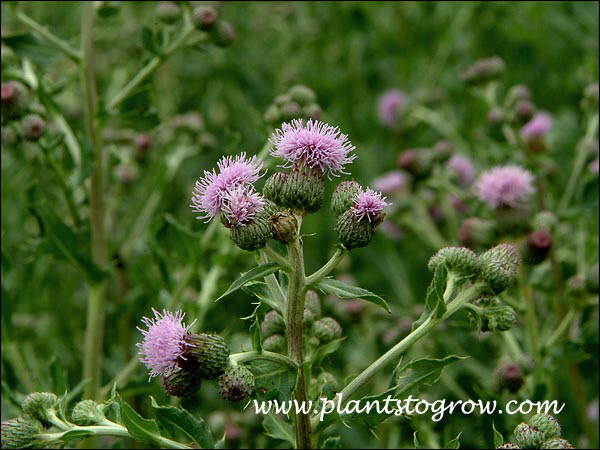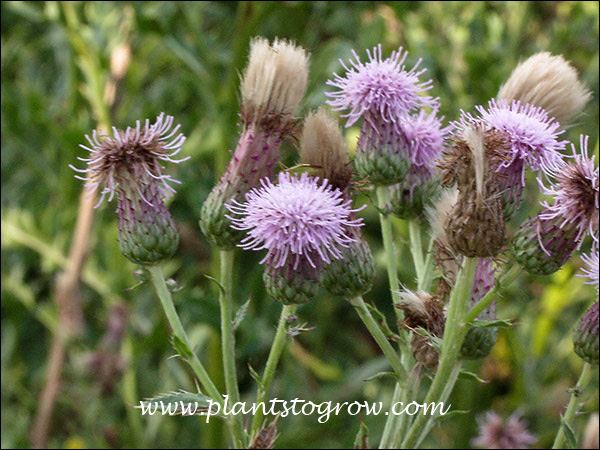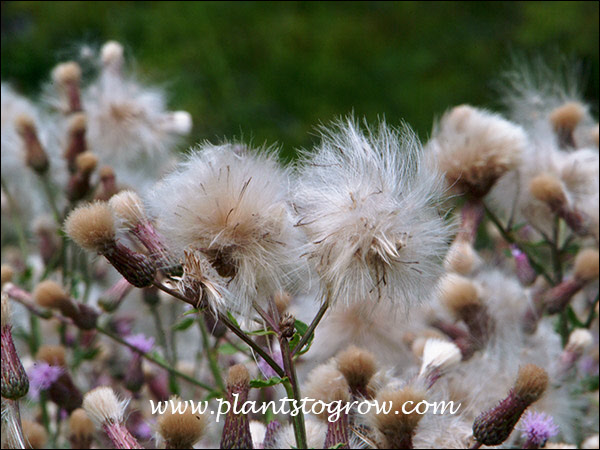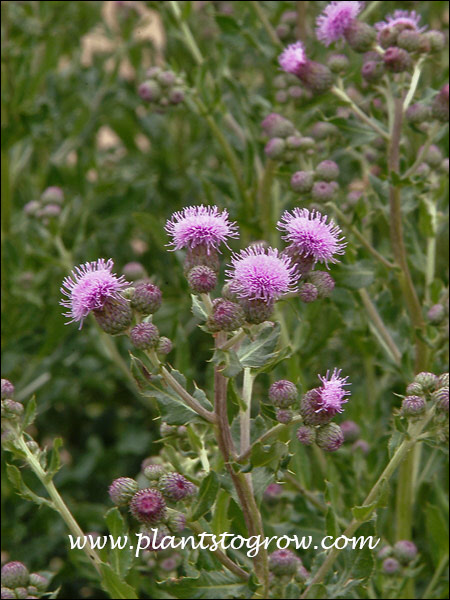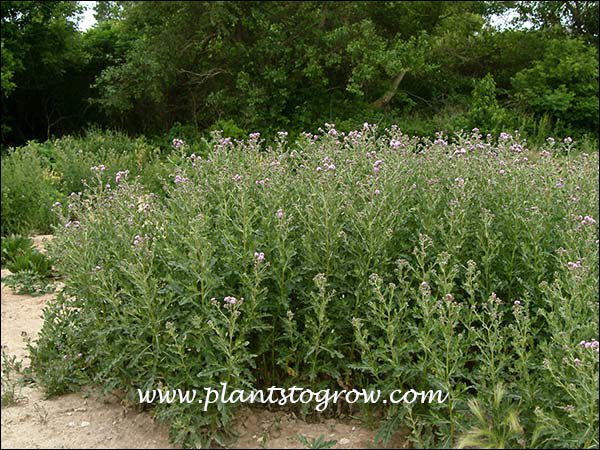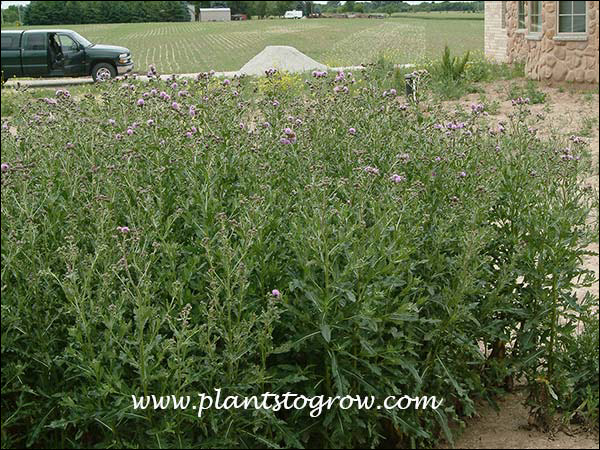| Description | A noxious weed that can be a major problem in gardens, landscape plantings or crop fields. |
|---|---|
| Plant Type | All Plants, Weeds |
| Sunlight | full |
| Moisture | adaptable |
| Soil & Site | adaptable, crop fields, waste places, rich or heavy soil |
| Flowers | lavender to rose-purple, each flower on a terminal stalk, many flowers per plant, main pollinator is the Honey Bee, dioecious having male and female flowers usually on separate plants |
| Fruit | Seeds form a white to brown fluff called a pappus, which can be blown up to 1/2 mile. Individual plants produce an average of 1500 seeds, seeds remain viable for up to 20 years. There must be both male and female plants in the vicinity for successful pollination. |
| Leaves | alternate, oblong to lanceolate, have a spiny, wavy margin. |
| Roots | Roots go deep into the ground or spread horizontally, creeping through the soil |
| Maintenance | A very difficult plant to rid from the garden. The horizontal roots break off when pulling and they will form new plants. Continual pulling is necessary to kill this plant. I have had to use herbicides in badly infected areas. |
| Propagation | seeds |
| Native Site | The Canada Thistle is not native to Canada but is naturalized from Eurasia. |
| Notes & Reference | #19-Common Weeds (USDA Agricultural Research Service) |

Cart
